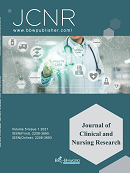View on the Clinical Value of QRS-T Angle
Abstract
The QRS-T angle, as an index of non-invasive cardioelectric vector, is closely related to the change of heart structure and function. There are different methedologies to measure the QRS-T angle, which can be roughly dividedinto two types: plane angle and space angle. Studies show that the influence factors include two aspects of physiology and pathology of the angle, in pathological ways, the disease such as myocardial hypertrophy, myocardial ischemia, hypertension, ventricular arrhythmia has larger clinical significance. In recent years, the research on the risk stratification of the QRS-T angle on sudden death has made great progress, but there are still some disputes about whether the space angle can be replaced by the plane angle and the range of normal value and so on.


